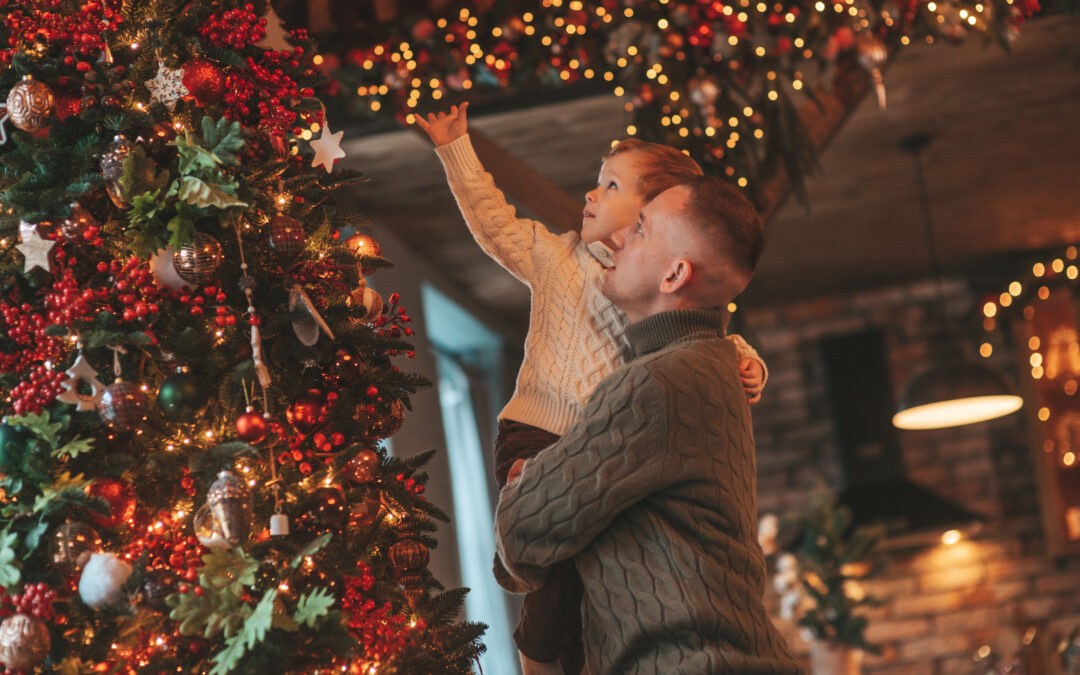Before I started working at a garden center, late autumn could be a bit depressing. When colder mornings and cloudier skies are combined with leaves falling and perennials withering, I felt more than a twinge of sadness. But not anymore. From design plans and buying to receiving and set up, I spend time thinking about the Christmas Holiday 365 days a year. The indoor Holiday Wonderland Tree Walk has been up and running for a couple of weeks, but this week has seen so many trucks filled with evergreen wreaths, garland and trees from up north. Our once empty nursery yard is filled with the fragrance of fir and cedar. And our echo-filled greenhouse will soon be bursting with the color of poinsettias and cyclamen.
The first reference of evergreen trees in the home was in 17th century Germany. Trees were decorated with apples, nuts, pretzels and small flowers that were collected by the children on Christmas Day. The custom of lighting trees with candles was well established by the late 18th century which was about the time that holiday trees were popularized in the United States. Those first Christmas trees were not brought into the home and decorated until December 24th and taken down soon after. In the United States, trees are now commonly put up right after Thanksgiving and not taken down until after the New Year.
The variety of trees used in holiday celebration varies from region to region. Scotch Pines used to be the most common in Wisconsin, but are now lagging far behind Fraser and Balsam Firs. All of the trees sold at the Bruce Company are grown on Northern Wisconsin family farms and are harvested in early to mid November.
Balsam Fir, A. balsamea, is native to most of eastern and central Canada and the northeastern United States, including northern Wisconsin. Balsam Firs prefer growing conditions similar to those of the Fraser, in cooler, acidic soils with good drainage. This limits its use as a landscape tree, but your yard’s loss is your living room’s gain. Of the commonly available Christmas trees, Balsam Firs are the most fragrant. That resinous evergreen scent evokes visions of the north woods. The dark green needles have a flatter appearance than the Fraser Fir and stay on almost as long. The trees tend to be broader in shape and the branches are less stiff, so heavy ornaments may have to be hung on the inside branches. But those same softer branches make it easy to light the inside of the tree.
Fraser Fir, Abies faseri, is closely related to the Balsam Fir. Its native range is restricted to the southeastern Appalachian Mountains. Fraser Firs are grown as Christmas trees in Wisconsin, but they don’t fare well as landscape plants. The soil in our area is alkaline and gets too hot in the summer to sustain long term health. Fraser Firs have very dark green needles with silvery white stripes on the underside. Their great needle retention makes them perfect for those of you who decorate your tree early, or leave it up late. Frasers are not strongly fragrant, but they are really easy to decorate. Stiff branches are fabulous for bigger, heavier ornaments and soft needles won’t scratch your arms when you’re stringing lights.
White Pine, Pinus strobus, is a tree native to Wisconsin. This tree is more forgiving culturally than the firs, so you will find a selection of White Pines at the Garden Center for landscape use. There are many interesting dwarf varieties available. The needles are a attractive blue-green color and are very soft. You may notice that Pines sold as Christmas trees show some evidence of painting or dying. This is because the trees respond to dropping temperatures by bronzing slightly. If the weather is cold before the trees are cut, a bit of non-toxic color is applied to improve the appearance. White Pines are often sheared, creating dense tree with relatively short branches.
Every year about this time, we get questions about the practice of using a living tree for holiday decorating, then planting it after Christmas. This sounds very romantic and environmentally responsible, but our winter climate makes it pretty impractical. Christmas trees are a renewable crop, most commonly harvested 7 to 9 years after planting. While they grow, they renew soil, add oxygen to the air and retail soil moisture. After a field is cut, the trees are replaced, often two- or three-fold. In your home, they add sparkle and magic to your holiday celebrations. And honestly. Could who could ask for more?

